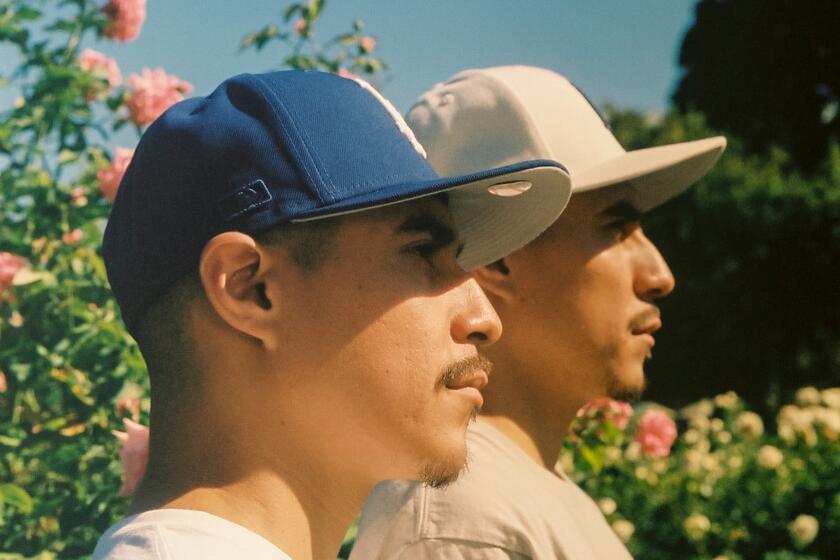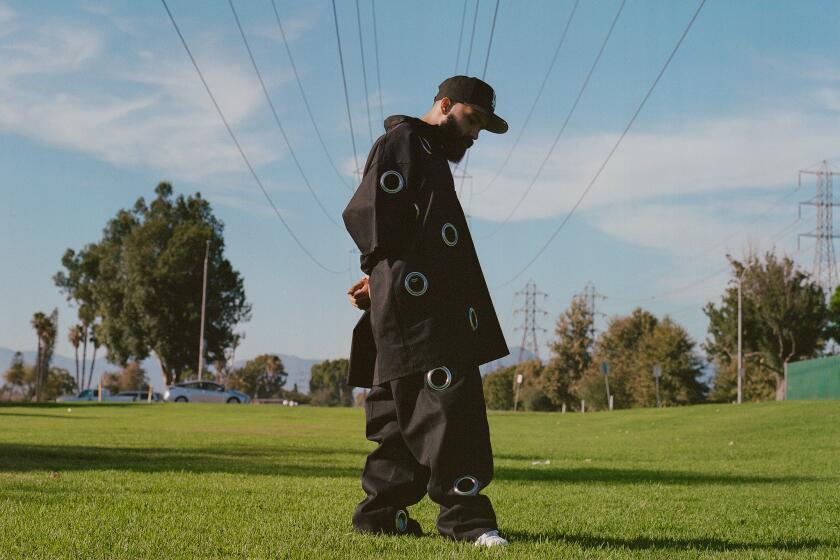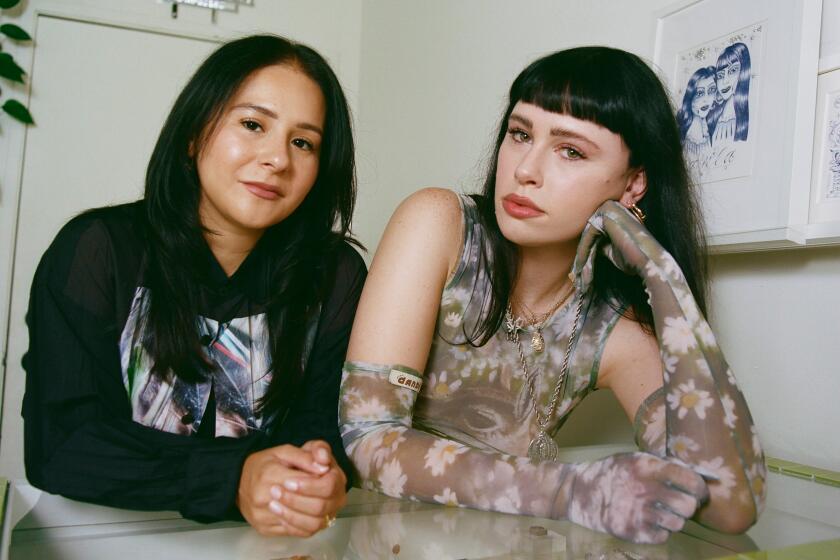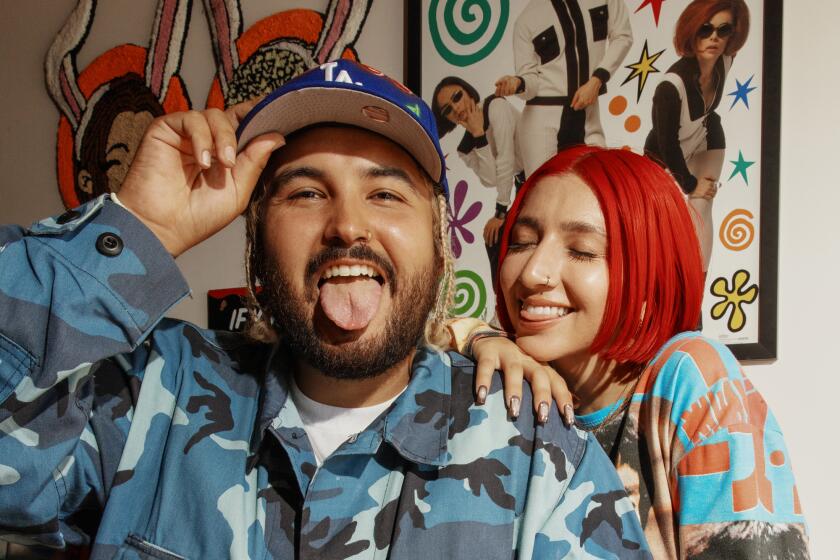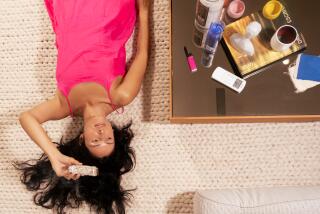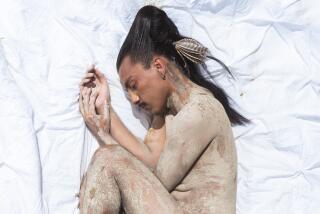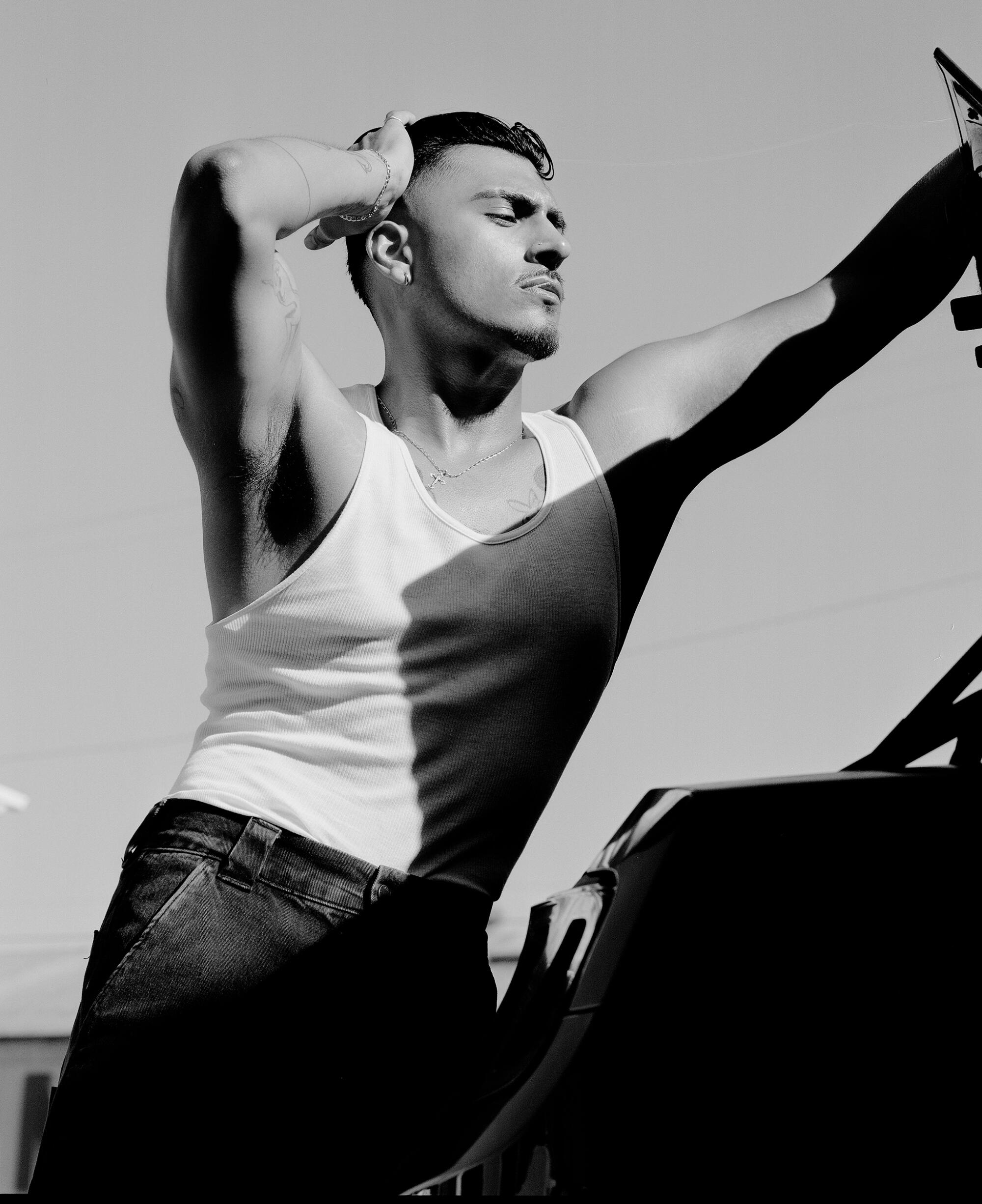
This story is part of Image issue 13, “Image Makers,” a celebration of the L.A. luminaries redefining the narrative possibilities of fashion. Read the whole issue here.
Eddie Lopez Bautista wants to be clear, so listen. “I’m not going to be typecast.” A stylist and model, the Highland Park native has an intimate relationship with imagery. Especially the imagery he grew up with, references that could come only from his pocket of northeast L.A., which is specific. Take the outfit he wore for a portrait captured by Dorian Ulises López Macías outside an HLP institution, the T-Shirt Warehouse on York (a striking image that was then painted by artist rafa esparza). The royal blue Dodgers hat, white tank and gold chain were the same hat, same tank, same chain Lopez Bautista saw his brothers wearing in the late ’90s and early 2000s, when they would spend hours making sure everything from their fade to their fit was on point.
“L.A. has many pockets and many style influences within those pockets,” Lopez Bautista says. “We’re not just broad L.A. — L.A. is not one place and I think it’s important to see people from L.A. participate in these projects that are meant to showcase and highlight L.A.”
The 25-year-old started his modeling career on sets where he was working as a stylist. Lopez Bautista has a striking face: warm brown eyes that contrast against a chiseled jaw, intense brows (with the slits, of course), a Colgate smile that can disarm someone in seconds. He has jet black hair and mahogany skin. Tattoos and a nose stud. Photographers asked him if he would ever consider being part of the crew in front of the camera, instead of behind it. Since then, he’s been in campaigns for Shaka Wear, Willy Chavarria New York and Born X Raised, as well as the music video for Omar Apollo’s “Tamagotchi,” among other projects.
He stepped into the opportunity mostly because he sees modeling in a similar way to styling: Having a hand in creating an image that’s authentic to him, his family and his friends — referencing time and place in a way that’s natural and real and not just for trend or clout. “I want others to know that they shouldn’t allow themselves to be typecast. It doesn’t mean don’t do stuff that is in relation to the Latinx identity,” Lopez Bautista says. “It just means do stuff that’s authentic and true to yourself. Participate in things that mean something to you. Don’t ever do things for success or fame, do it for the art.”
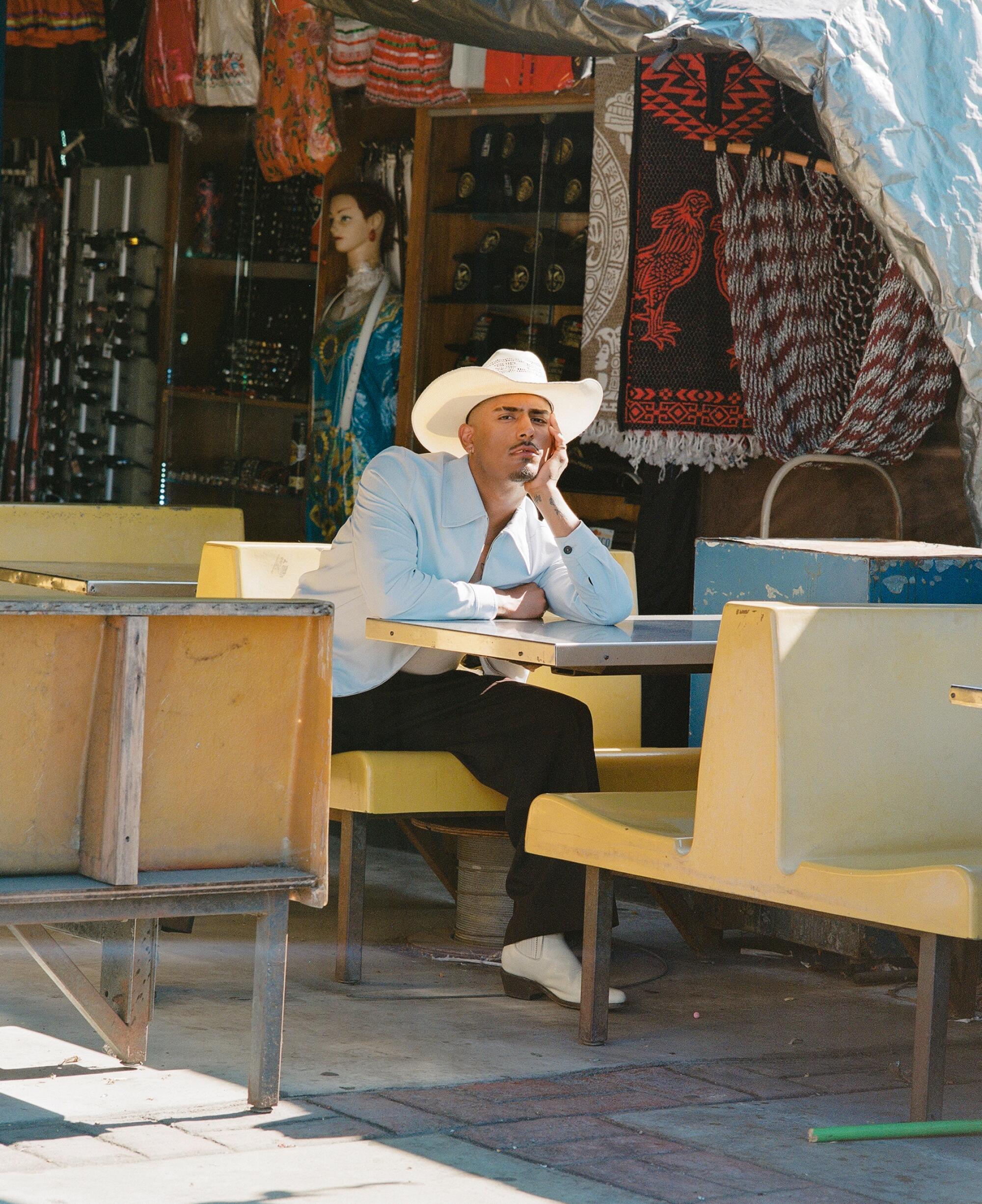
Julissa James: What was it like growing up in Highland Park?
Eddie Lopez Bautista: Highland Park has been the face of gentrification in northeast L.A. It’s important to talk about that. Growing up there was totally different — there weren’t coffee shops on York Boulevard. But there was definitely a good sense of family, community. I’m first-generation. My parents are both from Michoacán, Mexico. They confided in their community when they lived in Highland Park, and their family most importantly. Those families are able to tether themselves together due to immigration and coming here chasing the American dream — how to navigate that and raise their children in this neighborhood. I always felt that growing up. You could go to the neighbors and ask them for help and they’re gonna help you. Always the family parties — which are really, really, really, really monumental and special to us.
JJ: A lot of the references that informed your style and the way you move through the world come from that, plus your siblings growing up in ’90s L.A. Can we talk about some of those visual cues that you still carry in your day-to-day?
The Polio brothers are shaking up the modeling game with a bond that’s hard to explain.
ELB: My brothers have formed me: the little guy that I was back then, the man that I am now. It was interesting to see how my brothers were so put together with the resources that they had. You know when a little girl sees their mom get ready and put on lipstick for the first time? For me, it was seeing my brothers get ready. They always had clean white sneakers, Air Forces, to be exact. Dickies always pressed, super important. Whatever they had available to them, they made it work. I think growing up in a household that was geared more towards toxic masculinity, it was interesting to see how a man could take care of himself and that was OK. It was OK to be like that.
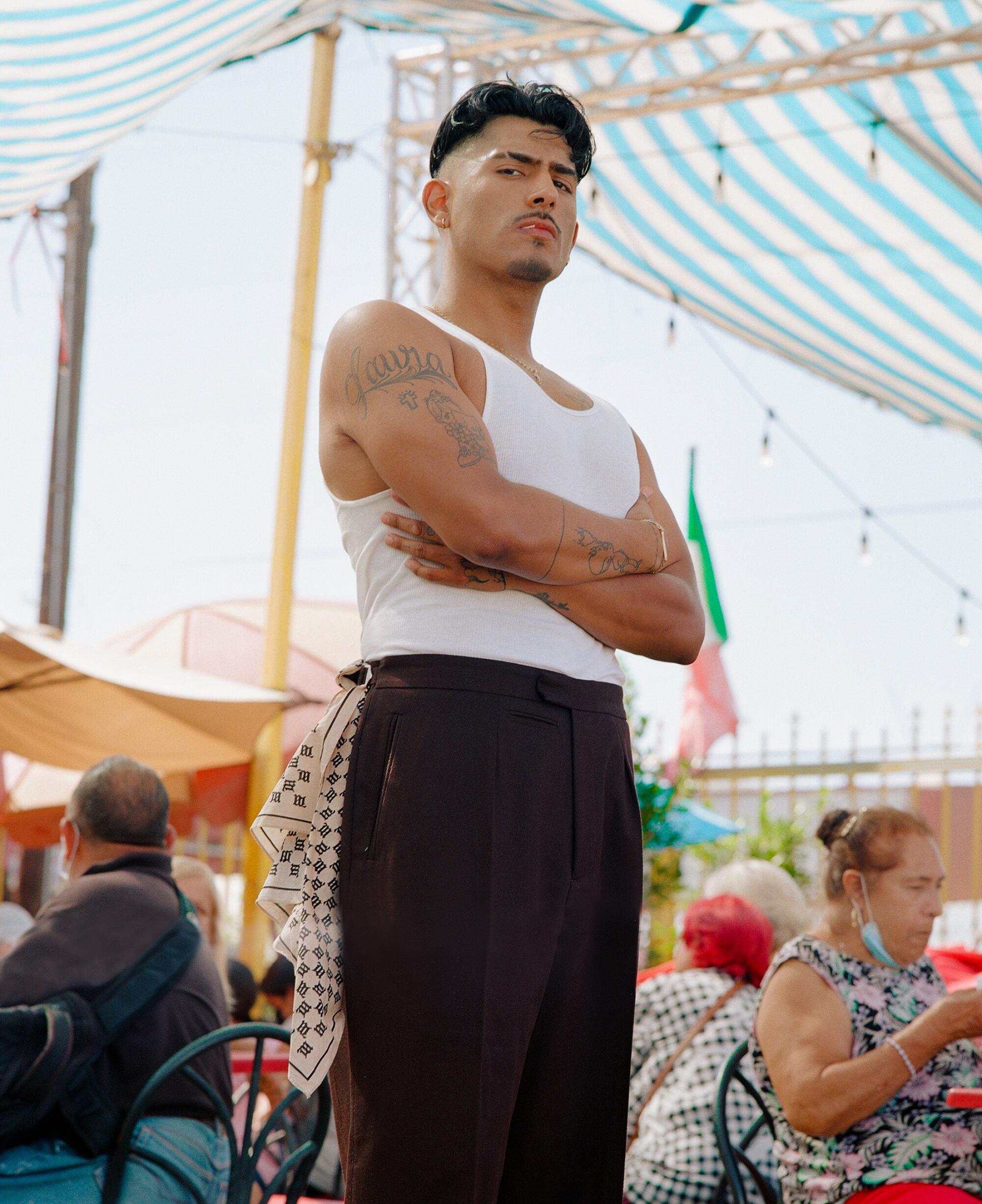
JJ: You’re also a stylist. How did you get your start modeling?
ELB: I started making these connections with the photographers on set, like, “Hey, let’s do a little test shoot. Even if I don’t have enough time today to take a picture of you, let’s set something up.” It started off super casual and it’s been taking off ever since. Then just having more of a presence on social media and getting myself out there started getting me commercial and e-commerce gigs. I was surprised I enjoyed it as much as I enjoy styling.
JJ: You’ve done a lot of work across the board — modeling for photographers such as Dorian Ulises López Macías and artist rafa esparza to brands including Born X Raised. What’s the thread connecting your work? How do you view modeling as an art?
ELB: I think it’s having a collaboration of artists reaching [for] the same goal. You’re not always afforded that luxury in this game, and I understand that. It’s been a privilege to work with all these people — like rafa and Dorian and Fabian [Guerrero]. I think it’s in the power of collaborating and speaking up. It’s important for me so that my identity is not made into a caricature — the way that I grew up, and the way that I pay tribute and respect to my ethnicity, my community, my family, my friends, is portrayed in a way that’s beautiful, elegant and authentic.
I’ve been doing all the work that I can in order for that to be conveyed. So when these editorials happen, since I’m managing myself in L.A., it’s all about speaking with them. If that means coffee, or that means sending them a treatment that I’ve worked on. I’m an overachiever. If they send me a deck, I have questions. I think education is super important. If I don’t have 60% to 70% previous knowledge about the job that I’m about to take on, I say no. There’s power in saying no. Being selective with the work that I do has led me [here].
JJ: Did it take you a while to get comfortable in front of the camera or did it feel natural right away?
ELB: I’m very aware of myself. And it’s important to be self-aware in this profession. Not a shoot goes by that gets easier. The nerves always kick in. A lot of it has to do with that great amount of responsibility that I feel that I carry on my shoulders — that I want to, by choice, carry on my shoulders — to portray my actual identity in a way that’s going to be beautiful and it’s going to be respected. It’s that type of nerve. Some would say it’s self-imposed versus it being like, “Oh, my God, I’m in front of a camera. I feel nervous. Am I going to look good?” To be quite honest with you, I’d rather not even look at the monitor. A lot of the stuff I’ve done is also film — I love film because it’s just the trust that you have between the photographer and yourself. You don’t have a mirror in front of you. It’s about emotion, feeling and then confidence.
JJ: Have you noticed the way being a stylist has made you a better model and vice versa?
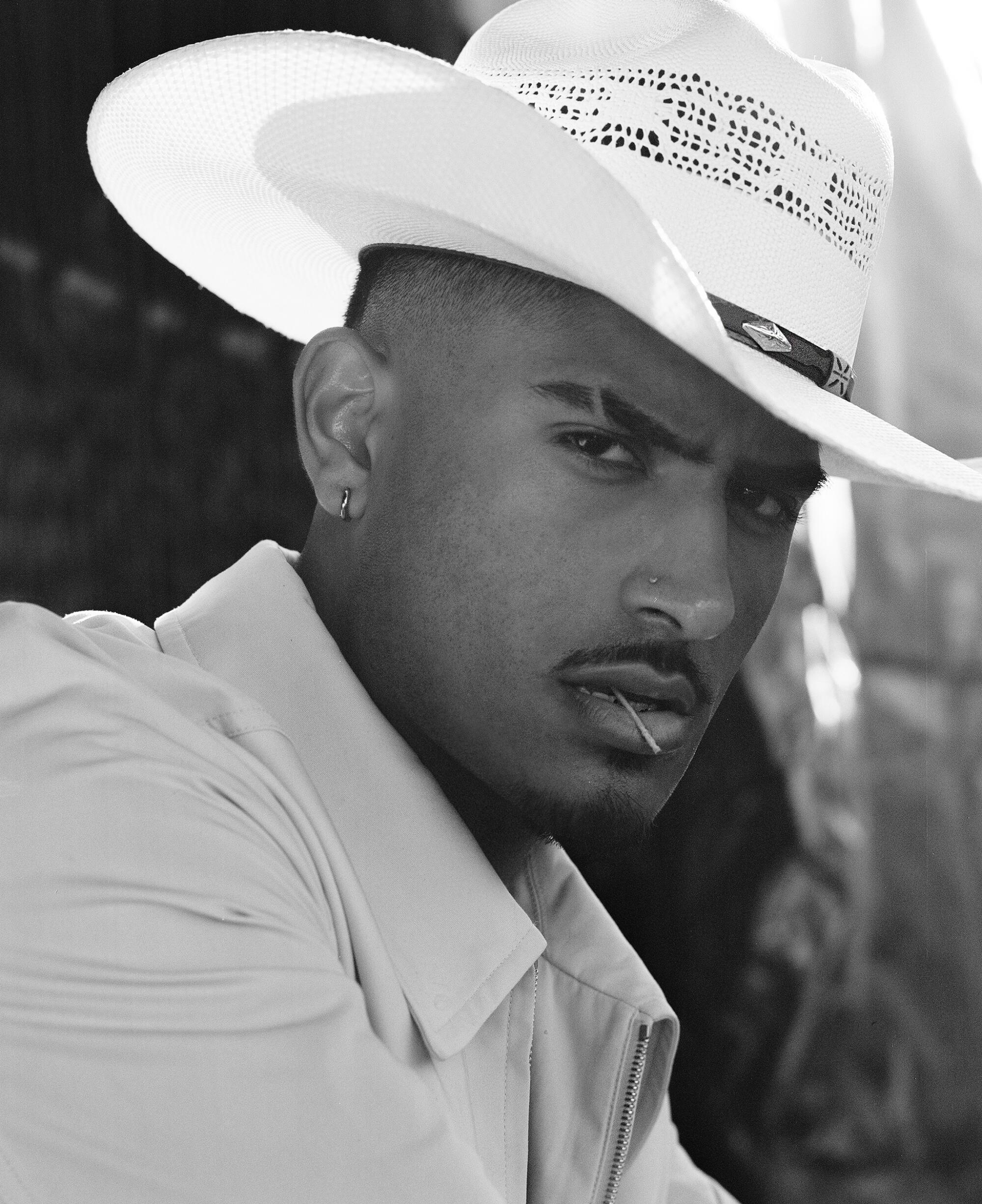
ELB: The intersection between modeling and styling is finally starting to, in a sense, pay off. I’m privileged enough where they could send me a treatment and ask, “What do you think about this? What do you think about this shoe?” Almost like consulting. I’m honored. The way the styling starts to intertwine with the modeling, they’ll ask me to bring stuff to set. The opportunity now is to collaborate with my colleagues, with the stylists. It’s all about being respectful of their position there and your position there, but in the end, we create something that’s pretty magical.
JJ: Has seeing yourself in photographs and music videos brought anything into perspective about your own image?
ELB: Absolutely. I think seeing myself in bigger scale in these beautiful campaigns is seeing that brown is beautiful. That I am beautiful. That people who look like me are beautiful. I know my place behind the camera, but being in front of the camera and not having the quote-unquote beauty standards of a model that we’re used to seeing, it’s very rewarding. It’s beautiful and it does a lot for my self-esteem — but it drives me. I want to take modeling even more seriously than I ever have because I feel this responsibility on my shoulders to show myself, most importantly, and my family that I can, but to everyone else who is watching because I know there’s people who are watching that look like me. That dress like me. That grew up like me in L.A. That’s mainly what’s come out of seeing myself in front of the camera.
Lettering design by Vivi Naranjo/For The Times; typeface: Goliagolia
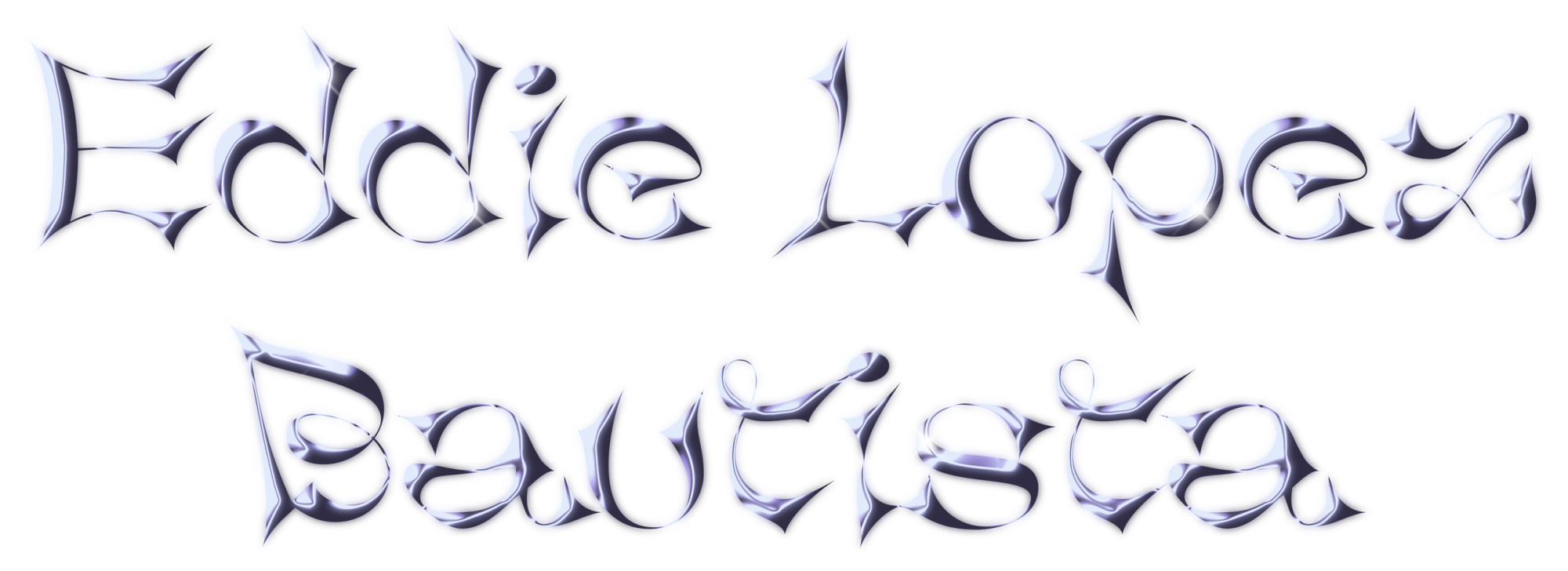
More stories from Image
